In 1965 Adela Akers traveled to Peru as a weaving adviser to the Alliance for Progress Program. In South America, she was deeply influenced by the innovative textiles of pre-Columbian Peruvian weavers, and researched ancient fiber traditions. The following year, she set up a successful local cottage industry in the Yucatan employing native weavers, and helping to encourage the modern survival of an age-old fiber arts heritage. In her own work, she explored the early Indian weaving techniques she had studied in rural towns and villages. Like those of the ancient Peruvians, her tapestry forms incorporated subtle shaping and striping, slits, and tabs.
In the mid-1960s, Adela Akers also dramatically increased the scale of her woven hangings. The desire to enlarge her work and to use multiple units was stimulated by her interest in architecture, especially old buildings in her native Spain. “I look at walls as weaving”; she has explained; “I look at doors and doorways as slits.” Increasing the size of her hangings also emphasized the internal structure of the piece: the elemental pattern of interlaced fibers was revealed more clearly. Beginning in the early 1970s, her work is marked by an increasing spareness of design, and the use of somber colors of similar value: brown, black, maroon.
After a summer spent researching basketry techniques at the Santa Barbara Museum in 1975, Akers continued her explorations in form and structure, using techniques of tapestry and twill, and ikat and soumak. The structure of the weave was of primary importance, and she emphasized it further by introducing jute and sisal to increase the physicality and stiffness of her pieces. To accentuate structure and textural contrasts even more, Akers restricted herself to fibers dyed a silver-gray: “gray was all the colors at once, and therefore no color.”
Wall pieces from the late 1970s and early 1980s often are shaped constructions, monochromatic explorations of pure woven form that stretch the definitions of woven forms—works composed of sections of circles that drape like regular wave formations, compositions of long woven strips that, with pulled warps, suddenly curve out from the wall, or planar shapes that are arranged in fanlike formations.
By the Sea (1993.54.1) marks a return to the use of strong color and color contrasts. Trips to Puerto Rico and the Dominican Republic exposed her to intense light and color, and to an exuberant Caribbean lifestyle that reminded Akers strongly of her childhood in Cuba. The clarity of the air and the brilliance of the water stimulated her to use strong color intervals in her work—and to introduce landscape imagery. “I grew up by water … sea and sky are inspiration to my work,” Akers wrote in 1986; “the sea … becomes a reflecting surface, a mirror to the colors I see everywhere.”
By the Sea represents the reflection of colorful land formations in water. But instead of a single scene, the artist has interleaved two different and separately structured landscape views, each of which can only be seen clearly from opposite vantagepoints. The wall hanging is composed of thirty-two narrow strips joined together and arranged on the wall in an accordianlike plane. Each scene was woven on sets of sixteen strips. To construct the piece, Akers interconnected the two sets, placing a strip from one scene next to a strip from the other, and sewed them together. When viewed flat, By the Sea does not read as a landscape, but as a colorful abstraction. However, arranged as intended in an accordian fashion, the separate views are clearly visible from different angles.
From the left, mauve and turquoise headlands set against a nighttime sky are seen mirrored on a black sea. From the right, the scene is a daytime view, lit by a light gray sky. A single, purple horizon line unifies the blended views. But at each vertical join, there is a strong color contrast. Akers’ affinity for structure and order is clearly evident in this woven form. As she has stated, “weaving combines structure and order, and offers me the best way to put together my visions.”
Jeremy Adamson KPMG Peat Marwick Collection of American Craft: A Gift to the Renwick Gallery (Washington, D.C.: Renwick Gallery, National Museum of American Art, Smithsonian Institution, 1994)
https://americanart.si.edu/artist/adela-akers-6274


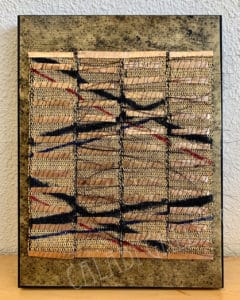
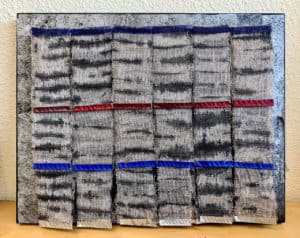
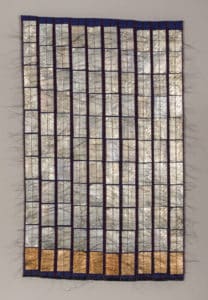
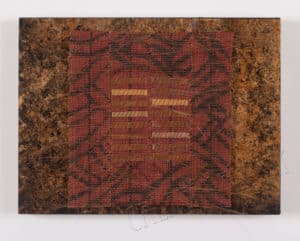
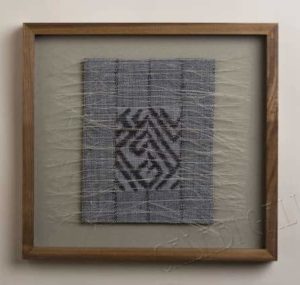
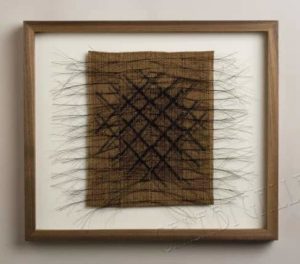
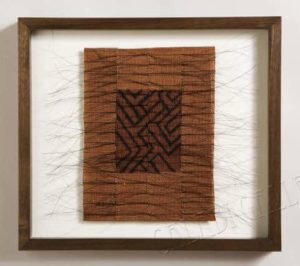
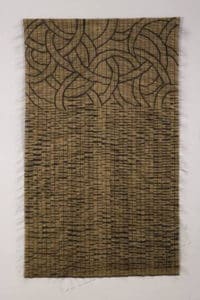

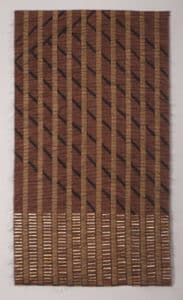

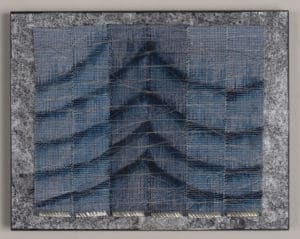
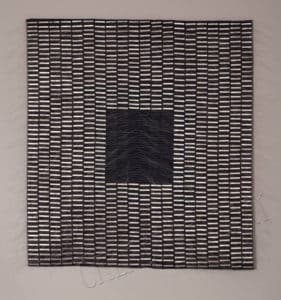
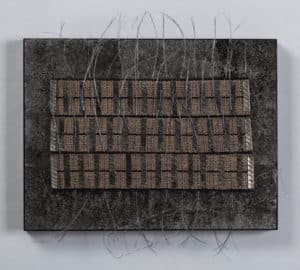

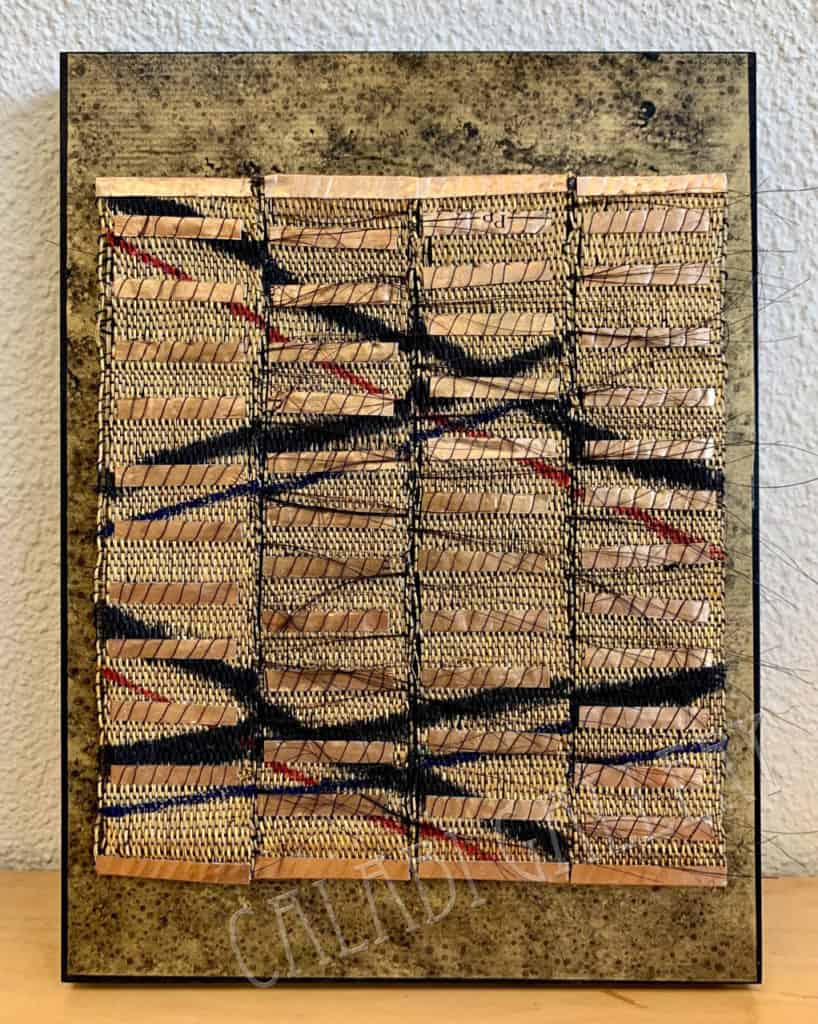


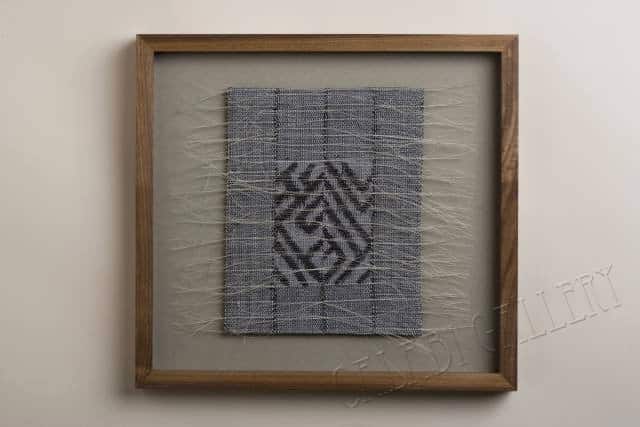
 Grid #2 by Adela Akers, Linen, horsehair & paint, 13 x14
Grid #2 by Adela Akers, Linen, horsehair & paint, 13 x14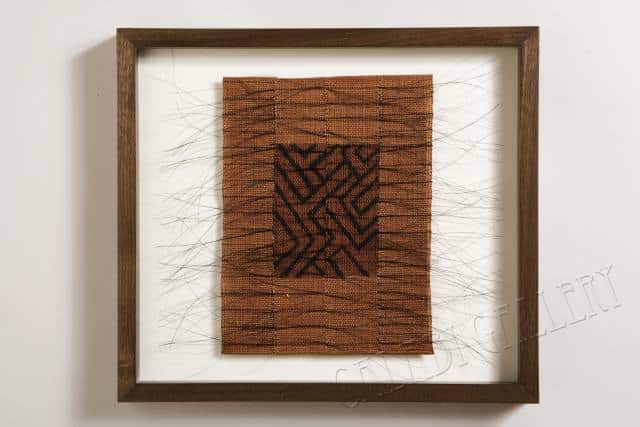
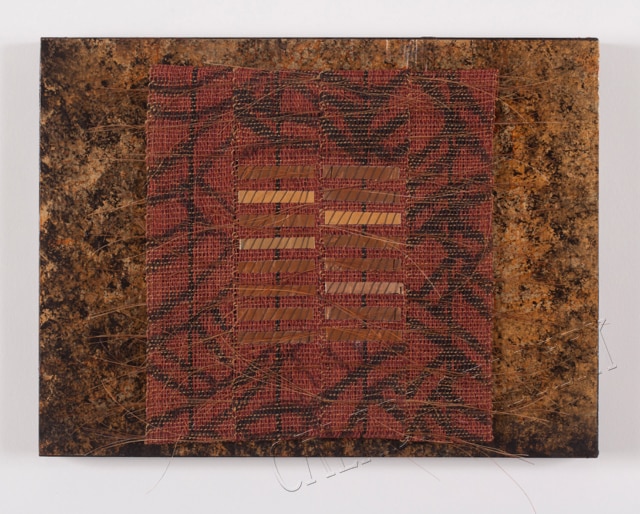
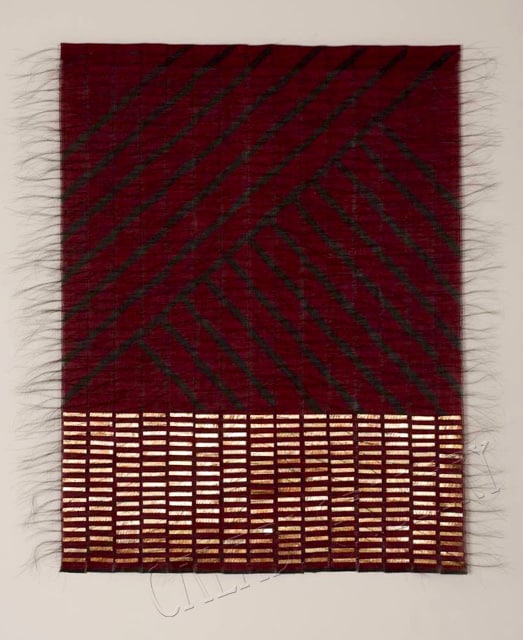
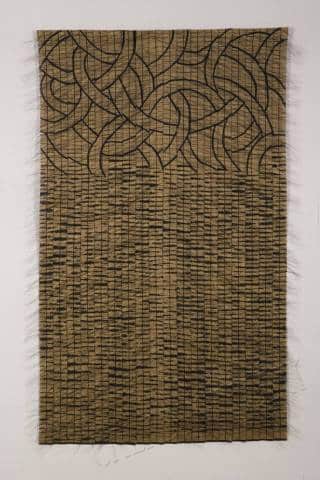


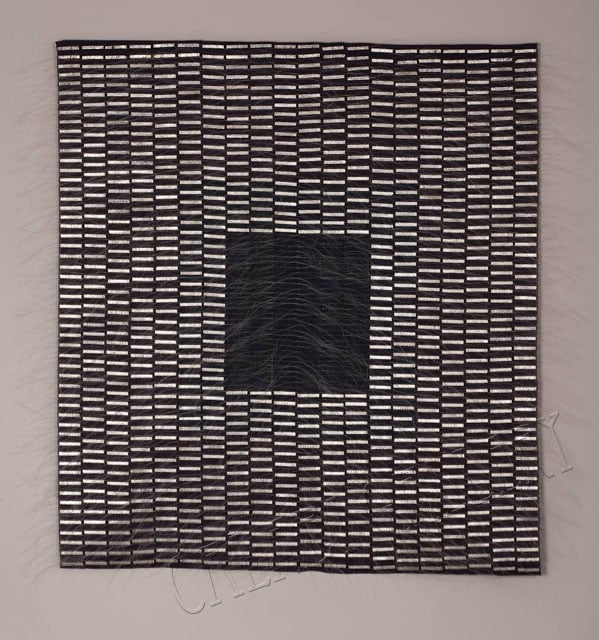
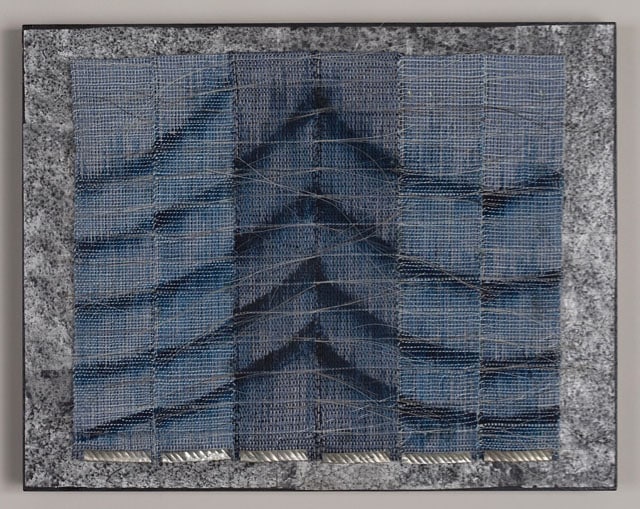

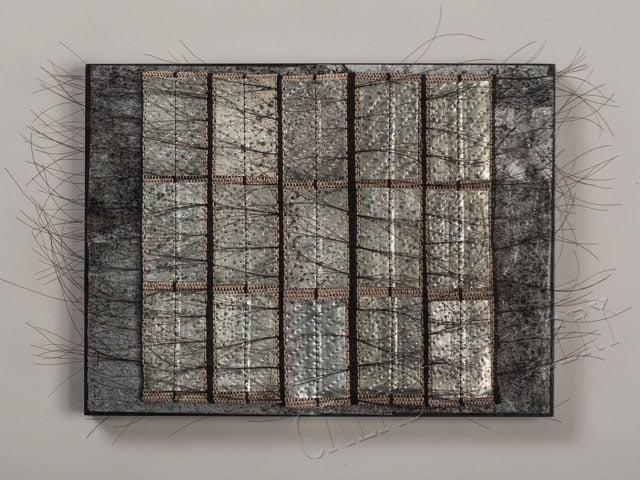
 And many more
And many more